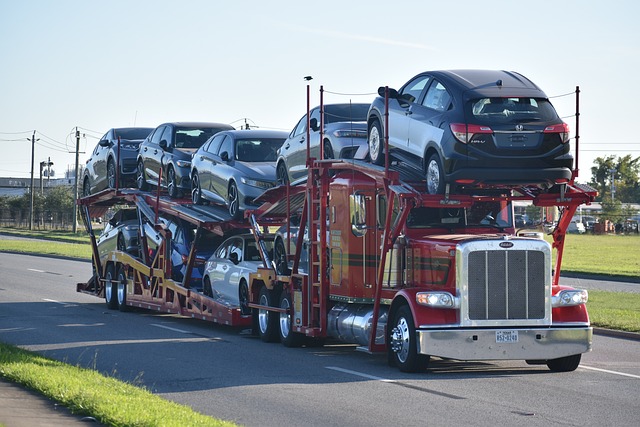In the world of classic car ownership, acquiring rare finds from across the globe is a dream for many enthusiasts. However, one significant hurdle lies in transporting these precious vehicles safely and affordably. This article delves into the intricate topic of multi-car shipping costs for classic cars, providing insights on understanding pricing factors and strategies to optimize expenses for owners navigating this unique challenge. From case studies to expert tips, discover how to efficiently ship your vintage gems.
- Understanding Multi-Car Shipping Costs: Factors Influencing Pricing
- Strategies to Reduce Expenses for Classic Car Owners
- Case Studies: Real-World Examples of Multi-Car Shipping for Classics
Understanding Multi-Car Shipping Costs: Factors Influencing Pricing

When it comes to shipping classic cars, understanding multi-car shipping costs is essential for budget planning. While a single car may be shipped at a relatively standard rate, incorporating multiple vehicles into one shipment can introduce complexities that affect pricing. Several factors come into play here, including the number of cars, their sizes and weights, origin and destination locations, and the chosen shipping method.
The cost of multi-car shipping is typically calculated per vehicle, with discounts often applied for larger quantities. Overland shipping, which involves road transport, may be more cost-effective for a few vehicles but can become less efficient when scaling up. In contrast, sea freight offers significant savings for bulk shipments but requires substantial lead time and has stricter loading requirements. Additionally, factors like fuel surcharges, insurance, and administrative fees can impact the overall price, making it crucial to request detailed quotes from various carriers to find the best value for your specific multi-car shipping needs.
Strategies to Reduce Expenses for Classic Car Owners

Many classic car owners look for ways to reduce their shipping costs, especially when dealing with valuable and often fragile antiques. One effective strategy is multi-car shipping, where multiple vehicles are transported together in a single shipment. This method not only spreads the shipping fees across several cars but also provides better protection as these classics are less likely to be exposed to external elements during transit. By combining their shipping needs, owners can take advantage of economies of scale and potentially save significant amounts.
Additionally, choosing the right transport company that specializes in classic car shipping can make a substantial difference. These experts understand the unique requirements of vintage vehicles and employ specialized techniques for secure loading and unloading. Some companies also offer competitive rates for long-distance hauls, further reducing expenses for owners looking to move their prized possessions across countries or continents.
Case Studies: Real-World Examples of Multi-Car Shipping for Classics

Shipping a classic car can be an expensive endeavor, but understanding the multi-car shipping costs and employing strategic cost-saving methods can make the process more affordable. By considering various factors influencing pricing, such as distance, vehicle condition, and packaging, owners can navigate the market effectively. Additionally, leveraging strategies like consolidation or negotiating with carriers can significantly reduce expenses. As seen in real-world case studies, successful multi-car shipping for classics is achievable, providing relief to owners who want to move their beloved vehicles while keeping costs under control.
